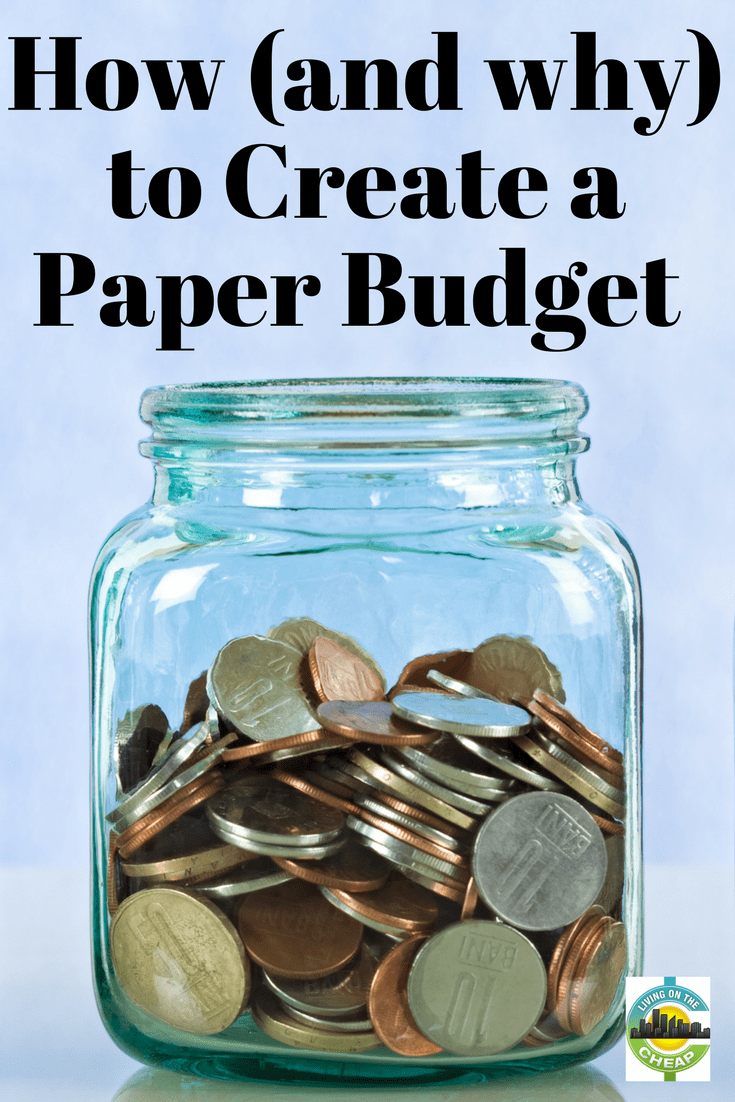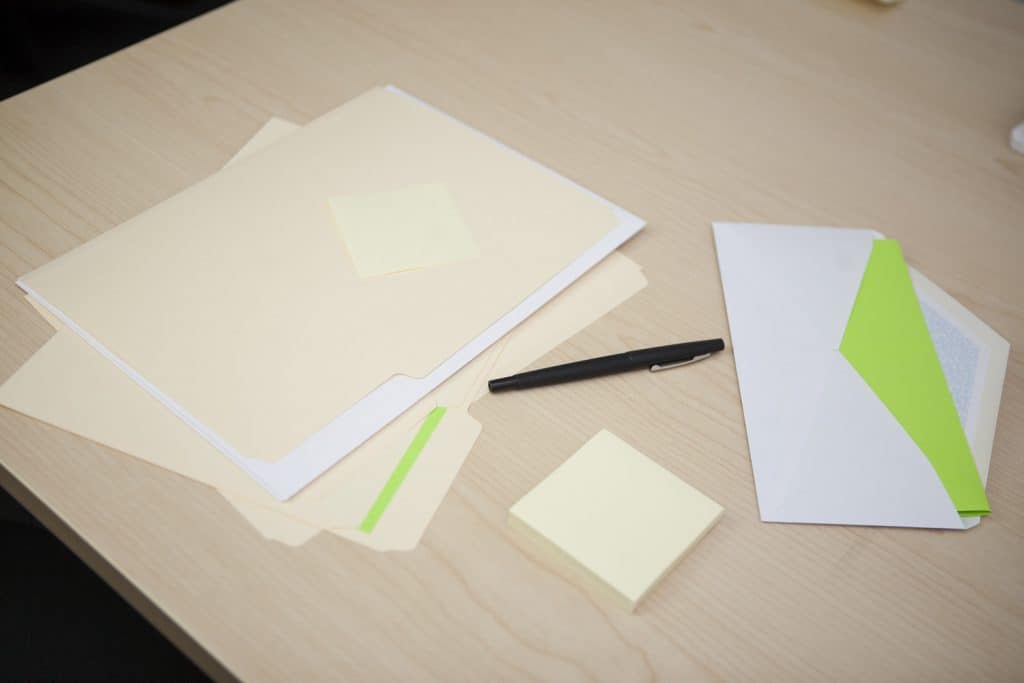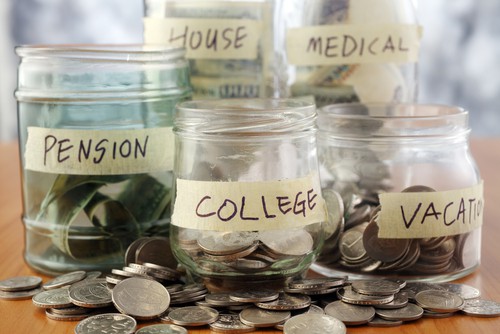Happy New Year! If you’ve been thinking about preparing and living on a budget this year following is how to get started immediately. With a little tracking (that can lead to some self-awareness) you can be on your way to achieving your financial goals in no time.
Pen and paper v. Software and Apps
I have looked at budgeting software and apps over the years and many of them look great. However, many of these options require a lot of initial set up and I find that many people get discouraged with the amount of initial work and give up. Also apps and software generally require you to link to your bank accounts, brokerage accounts, and credit cards. There’s always the issue of security and hacking, which seems to be more and more prevalent these days.
Finally with software and apps, a lot of credit card charges are put in general categories and you really won’t have an in-depth understanding of what you’re spending your money on without looking at the actual receipts. You get a much better idea of what you’re spending by sitting down each month and looking at paper and seeing where it’s all going. Once you have it set up after a few months it won’t take a lot of time.
So for those reasons this post is about the pen and paper approach. If you’re comfortable with Excel you can start with a simple spreadsheet but if not a pen and a pad of paper is all you need to get started immediately.
Determine your monthly take home pay after taxes
Pull out the last month’s paycheck stubs and record your net income after taxes and all other payroll deductions. You can also look through your checking account at your direct deposits.
Don’t count bonuses. You may not get a bonus this year and if you are including it you will come up short if the bonus gets cut. If you do get the bonus then that will be a extra money you can put toward paying down debt or applying to savings.
Don’t count your tax refund as income. True, it is the government returning your money to you, but with potentially major changes coming to the tax code in 2017, who knows if you will get the same refund.
If you’re self-employed you will have to create some type of estimate based on last year’s earnings and any other information you have about what you might earn next year. Don’t overestimate. If you make more, great, but you don’t want to come up short.
Make a list of your expenses
On a separate page list all your monthly fixed expenses such as rent, mortgage, student loans, car payment, rail pass, cell phone, etc. Then add all the monthly variable expenses such as food, dining out, entertainment, utilities, gas, taxis/Uber, dry cleaning and anything else you spend money on.
Don’t forget expenses that recur less frequently such as homeowners and car insurance, car registration, hair salon, etc. Determine what those cost annually, divide by 12 and add to the list.
Go through your bills and statements
Now you have a list of estimated expenses. Using an estimate of what you think you spend is a framework but you must go through your bills, bank and credit card statements and update the list of with actual expenses. It may seem like a waste of time to do an estimate and then use actual expenses but you will see that you are probably underestimating what you spend, sometimes by quite a lot.
Also the problem most people have when creating a budget is that there is “missing” money. These are unidentified expenditures paid for via debit cards and/or ATM withdrawals. You may be taking $200 a month out of ATMs or as cash back on your debit card and not know where it’s going.
Track your expenses for a couple months
The most effective way to understand your real expenses is to track your spending for a couple months. I have done this by carrying an envelope in my bag and putting every receipt into it for a whole month. If you buy something without a receipt write it on the outside of the envelope. If you’re in a couple, both parties should do this. Over the course of a month you may fill up multiple legal-size envelopes.
At the end of each month sit down and go through all the receipts and add up all the your expenditures by category. Pull out all your bills, credit card statements and bank statements again and make sure you’ve accounted for all expenditures. You should also record all of your loan balances each month in a separate section.
Now you have created an actual budget that reflects what you’ve spent the last couple months. As you go along each month you will review how the current month came out and make adjustments until you know exactly what you’re spending. Every month list the new balance of each debt so you can see your progress in paying it off.
How much is left at the end of the month
If you subtract your actual expenditures from your net income each month and you are at zero or negative then need to:
- Go through your budget and cut expenses.
- Earn more money via a side hustle or get a higher paying job.
- Do both. Cut expenses and earn more money.
Don’t institute a draconian budget where you never spend any money. It’s not realistic and you will fail. Learn how to moderate your spending. Reduce your expenses by some reasonable amount each month until you get it under control.
Here are some Living on the Cheap posts to help reduce expenses. The website is chock full of other expert tips and ideas:
- 12 ways to save more money this year
- 21 ways to deal with your post holiday financial hangover
- Downsize your home and build wealth
- Downsize your clutter and build wealth
- How to save money on food without using coupons
What are your financial goals?
The primary purpose of a budget is to spend less money than you earn so that you have money available to achieve your financial goals. If you have financial goals every time you’re tempted to deviate from your budget you will know that you are impeding your progress.
List your goals such as pay down student loan or credit card debt, create an emergency fund, save for vacation and add line items to your budget to allocate money to those uses each month.
If your goal is to save for retirement and you are contributing to your company retirement plan through a payroll deduction then adjust your net income lower to reflect your new net paycheck. Once all of your debt is paid off the first item on your monthly budget should always be savings. Pay yourself first.
Don’t value yourself by your spending level and material possessions. Everything you buy will end up in a landfill some day. Do you really want to work hours, months, weeks, years to add to waste dumps?
Write down your goals as a manifesto or mission statement
Write down your goals as a manifesto or mission statement and live buy it. This is your future and you are in control of it.
I will immediately stop spending money on things I do not need. I will pay off my student loans and after that I will join the company 401k, saving at least enough to get the company match. With extra money I save from reduced spending and that I earn from a side hustle I will pay off all my credit cards. I will never buy anything I do not have the cash in the bank to pay for.
and so on.
What is your net worth?
Add up all of your assets: mortgage equity, used car value, retirement savings, brokerage and bank account balances and subtract what you owe. If you’re just starting out your net worth won’t be much but if you’re into your 30s or older you may want to research where you should be and consider increasing your net worth as your primary overall financial goal.
Conclusion
A budget isn’t going to solve all your problems but it will make you aware of where the problems are. Everyone has something they are working toward and a budget can help you to get there. Most people are aware that they’re overspending and that they need to get their spending under control. When your credit card bill comes and you can’t pay it off in full you have a problem.
Don’t get discouraged. The situation may look abysmal now but living on a budget is the number way to improve your situation. Budgeting on paper is a quick and accurate way to start immediately, to see how much you’re spending and to get on the right financial track. Good luck!



